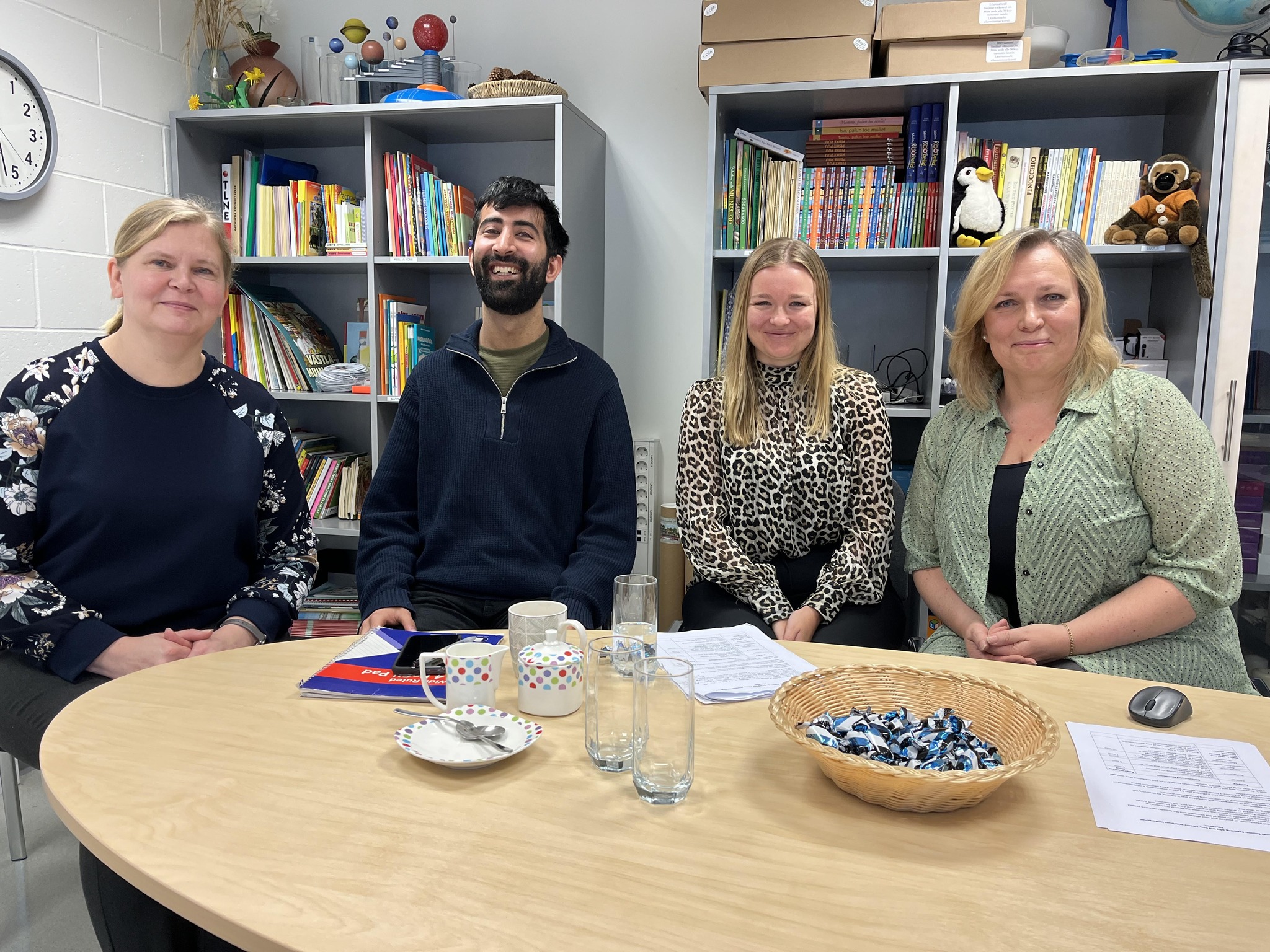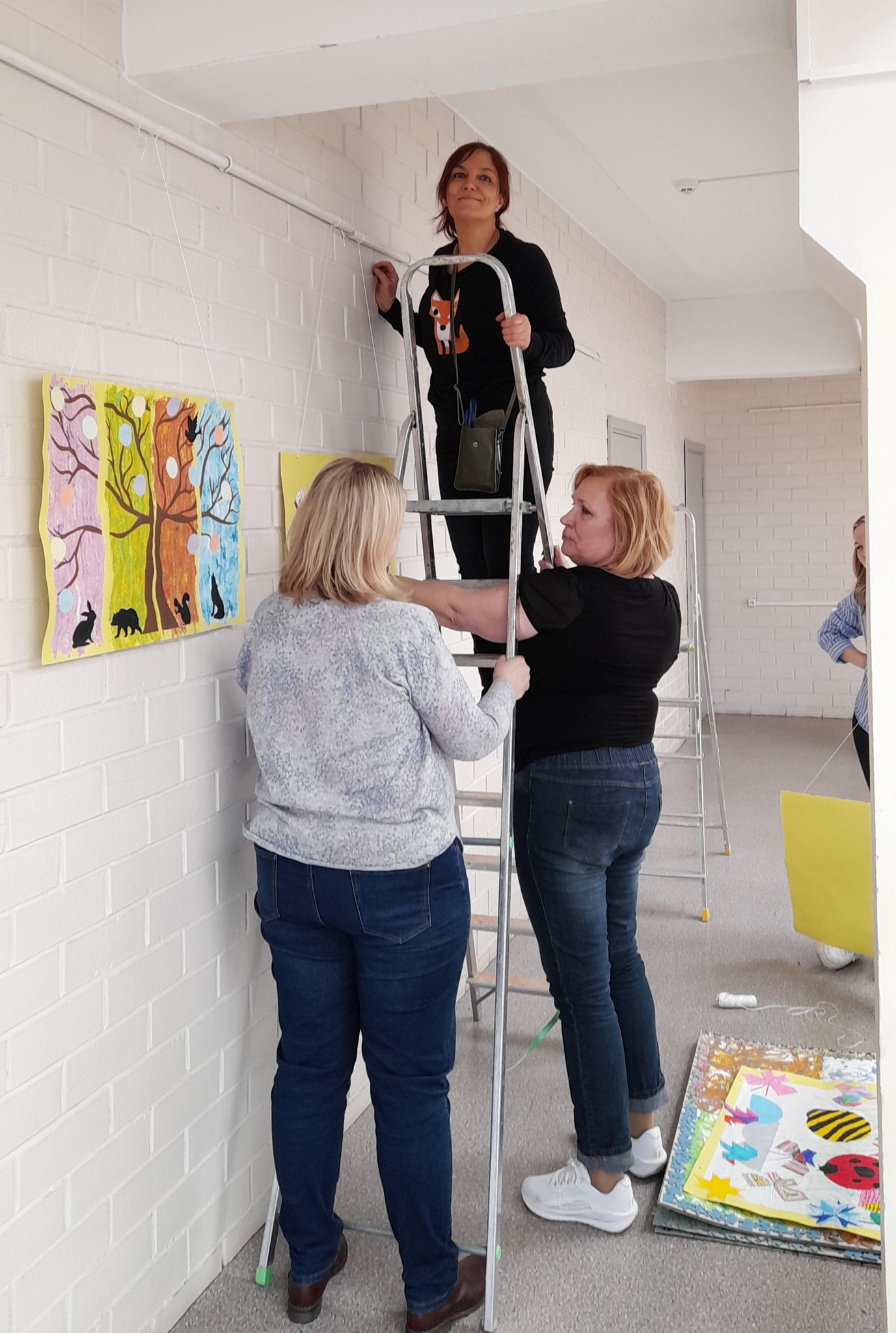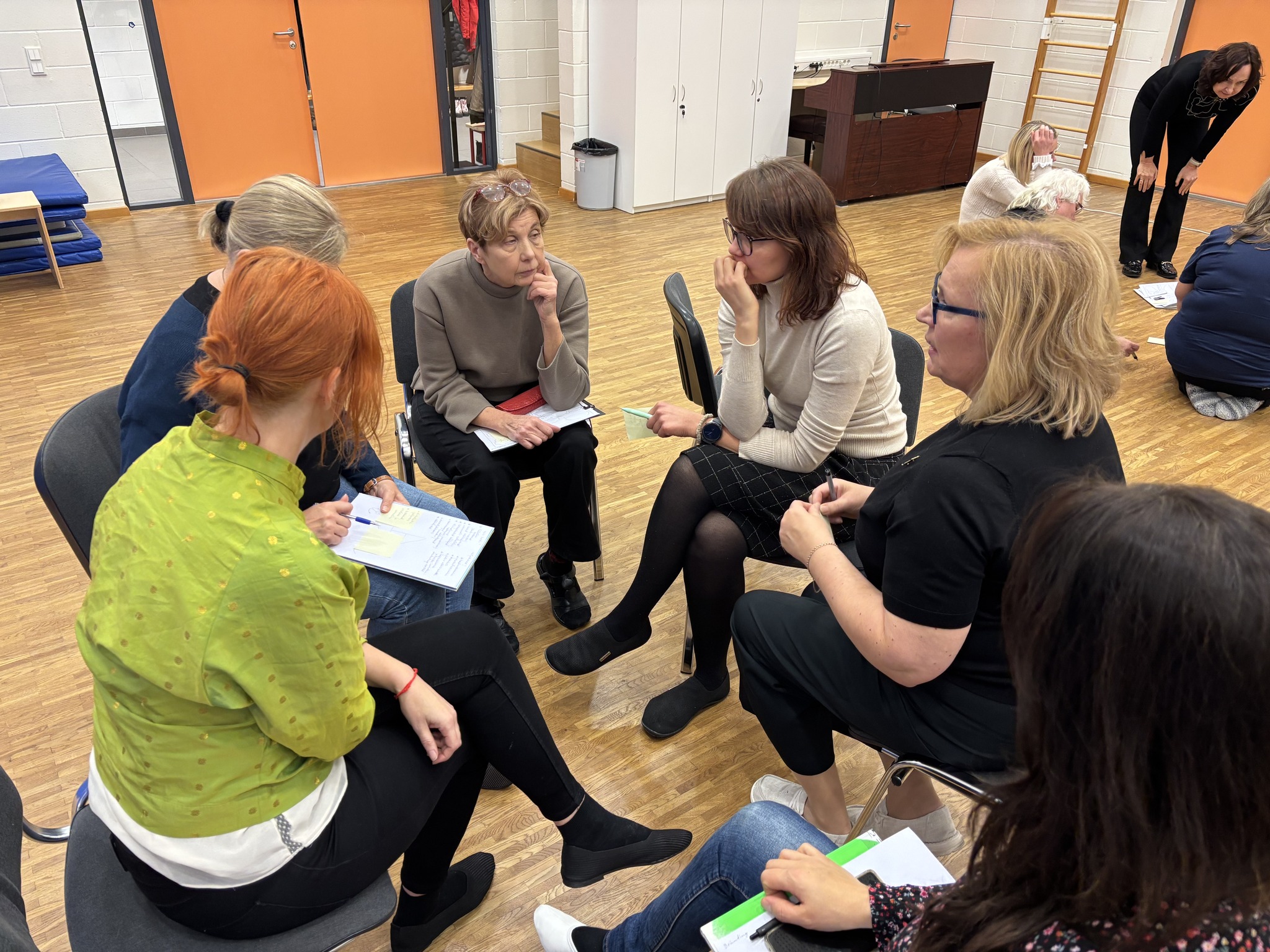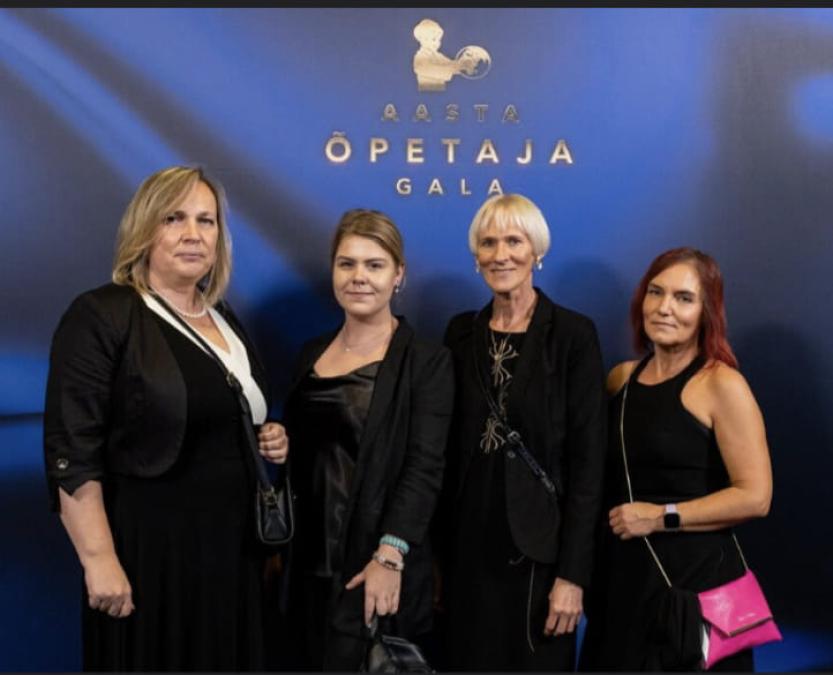Growing up in Türi, the girl had a definite dream from an early age. She wanted to become a kindergarten teacher who wouldn't be mean to children if they didn't want to sleep in the kindergarten. From this sincere desire grew a lifelong path dedicated to education, which has led her today to become the director of the Viimsi Combined Kindergarten.
Her story is a true example of how childhood experiences and a big heart for children can shape the entire career choice. Over the decades, she has been both a young teacher, a group leader and an educational leader, experiencing the educational life of both a small rural area and the rapidly developing Viimsi municipality.
In the interview, she talks about her journey, the lessons learned in the education sector, changes in kindergartens and the challenges of leadership. She also shares her thoughts on teacher salaries, the differences between the one- and two-teacher system, and how ELIIS has helped the Viimsi Combined Kindergarten function even better.
This is an inspiring story about a person who believes that every child and every employee can make the world a better place through their actions – and it is precisely carrying such values that is the greatest strength of Viimsi Combined Kindergarten.
How did you become a kindergarten teacher and later the head of Viimsi Combined Kindergarten?
“I grew up in Türi and also went to kindergarten there. I remember from my childhood that I really liked playing in kindergarten and participating in fun activities. At the same time, there were also strict teachers in kindergarten at that time, especially during recess, and I already thought that when I grow up, I want to be a teacher. This desire has accompanied me all my life. When I finished kindergarten, I already knew that I wanted to become a teacher – and in the end, I first became a kindergarten teacher and later a head.”
You have been involved in the education sector all your life. What is the most important lesson you have learned during this time?
“I started my teaching career in Haapsalu in 1990, as a young teacher, right after graduating from Rakvere Pedagogical School. I went to work knowing that I would apply everything I learned at school – but real life turned out to be different. My first big lesson was that you first have to adapt: see how things really work, learn from your colleagues and also understand the expectations of the manager at the time. Only then can you start to implement your ideas. This knowledge has helped me a lot later.”
You have worked in different regions – Haapsalu, Türi and now Viimsi. Have you noticed any big differences?
"In general, kindergartens are similar everywhere, but a lot has changed over time. Estonia is small, but very different - the capacity of local governments is quite variable. I started my leadership career in Türi and felt very good cooperation and support there, it is the same in Viimsi. The difference, however, is that Viimsi is a very fast-growing region with many children. This means that the need to create kindergartens is constant and great. At the same time, Viimsi municipality has found various solutions - cooperation with the private sector, support for children at home, etc. This flexibility and cooperation have been the key to success."
How much will the establishment of new municipal kindergartens in Viimsi affect the private sector?
“Only time will tell how it will turn out exactly. There are many private kindergartens in Viimsi. I think that competition will make everyone work harder – both municipal kindergartens and private kindergartens. Each type of kindergarten needs to find its strengths and specificities so that parents decide in favor of their kindergarten. I think that this is healthy for all parties.”
What changes have you noticed the most in the kindergarten during your work? “Kindergartens have become much more open over time. Nowadays, we talk a lot about child-centered learning and valuing the uniqueness of each child. While in the 1990s, children had to adapt to the existing system, now we are creating a system that takes into account the needs and strengths of children. Kindergartens also have much more autonomy today – each institution can shape its own image, choose appropriate methodologies and teaching methods. This is a big change compared to the time when I started as a teacher.”
Viimsi integrated kindergarten consists of several buildings. How do we keep each building its own face and uniqueness?
“One of our core values is uniqueness. This is not difficult if managers notice and value what people have created. The kindergarten environment is created primarily by people – teachers, the team, children and parents. If we give the teams the freedom and responsibility to shape the content and activities of their kindergarten, then each building will retain its own face. For example, in the Pärnamäe building, we have a lot of work ahead of us – the physical environment is ready, but now we need to design the appropriate content and traditions for it together with the new team. This is the process that takes place in cooperation with teachers, children and parents.”

Many municipalities have consolidated kindergartens under one management. Does this really bring savings or rather additional costs?
“My experience shows that budget management under one director is definitely more effective than when each kindergarten is managed by a separate director. However, I cannot say how much this actually saves money or increases costs – I have not analyzed specific numbers. The biggest win is precisely the better overview and cooperation. For example, if investments are needed in several buildings at the same time, it is easier for one manager to decide where to direct the money most sensibly.”
What have been the biggest challenges in staffing the new Pärnamäe building?
"We have worked hard for this and implemented a specific staff recruitment strategy. There have been a pleasing number of assistant teachers and we also have several career changers who come to work in education from other walks of life. Creating a new kindergarten attracts people - it gives them the opportunity to get involved in creating something new. It has been a little more difficult to find teachers, especially support specialists. It is very difficult to recruit speech therapists - no speech therapists have shown interest in us. There are also fewer special education teachers and psychologists than needed, but there is still more movement in the labor market for them."
How does recruitment work when Viimsi Combined Kindergarten is looking for new employees for several buildings at once?
“We started the recruitment process at the end of March. At first, we were specifically looking for staff for the Pärnamäe building, but it quickly became broader – there were some applicants who were more suitable for another building, and we offered them the opportunity based on their suitability. One advantage of a large combined kindergarten is that if an employee wants to leave for some reason, we can offer them a job in another building. This helps retain valuable employees.”
Are there any employee transfers and replacements between buildings?
We have permanent replacement employees. If replacements are needed, they will help. For example, this summer our on-call house was Randvere House, where Randvere teachers and assistant teachers worked and they were supported by employees from Päikeseratta House. However, it is rare during the school year for a teacher to go from one building to another to replace them – this is rather exceptional.”
How do the houses of Viimsi Combined Kindergarten cooperate with each other?
“We have developed several common traditions and forms of cooperation. One of the biggest events is the joint song day and dance day of our 8 houses, which take place alternately over the year. For example, this year there was a big song day with a procession from the Viimsi school yard to Laidoner Park – it was like our own little song festival.
In addition, there are joint training days, team events, experience exchange days and so-called student lunches, where each house takes turns sharing its good practices. We also hold joint study councils four times a year and have created development, digital and health teams, which include representatives from each house. All of this strengthens cooperation and creates good ground for professional development.”

What qualities do you consider most important when choosing a new teacher?
“We often start a job interview with a simple question: what is a good kindergarten? The answer to this question gives a very good idea of what the candidate values and what his or her principles are. It is also very important that the person has a genuine desire to work with children – this cannot be faked. In addition, we pay attention to a willingness to cooperate and values that fit our vision and team.”
What does the digital team of Viimsi Combined Kindergarten do and what digital tools are used in the kindergarten?
“The digital team consists of a representative elected from each house who is the digital teacher or leader of digital activities in their house. Their role is to support teachers, assistant teachers and children in the use of digital tools and the development of digital learning.
Every year we also organize a large joint digital day – for example, this year we held digital art exhibitions, where each group created digital art works created with robotics tools. These were exhibited in Viimsi Selver and the Hobby Centre. Last year, children's animations were produced as part of the digital day, the best of which were presented in Viimsi cinema.
We have a lot of different digital tools and robotics kits – they differ between houses, but the joint digital team provides an opportunity to share experiences and tools.”
ELIIS is widely used in Viimsi integrated kindergartens. What role does it play in your work?
“ELIIS helps a lot. Thanks to this, I don’t have to be physically present to understand what’s going on in the houses – all I need is a computer and an internet connection. With a few clicks, I can see entries, photos and daily summaries. The greatest strength of ELIIS is that it brings all the important information together in one environment.
There is certainly still a lot of room for further development and we haven’t even fully implemented all the existing functions. But already it is an invaluable tool for us, simplifying both management and communication.”
What recommendations would you give to the ELIIS team to make the system even better?
“For me, ELIIS works very well, but I also see ways to make it even more convenient. For example, it could be easier to customize the templates for documents and progress maps – so that each institution can more easily adapt them to its own needs.
In addition, artificial intelligence certainly has great potential. Teachers are already using it, but if ELIIS were to create AI-based tools that would help, for example, plan activities or fill out certain documentation, it would greatly simplify teachers’ daily work.”
In recent years, there has been a lot of discussion about the one-teacher and two-teacher systems. Which one do you think is better for the child?
“We at Viimsi prefer the one-teacher system. We have one teacher and two assistant teachers in a group, and at the busiest times there are three people present at the same time. This allows us to work in subgroups and take into account the individual needs of the children, which is one of the important principles of a child-centered learning environment.
Assistant teachers are highly valued team members whose job description emphasizes that their main job is to work with the children, not to clean or serve food. A partner company takes care of the meals, and in most buildings, meals are served in the dining hall – this gives children the opportunity to leave their games and activities unfinished and continue them later.
The one-teacher system allows the teacher to be the leader of the learning environment and shape the face of the group in cooperation with the assistant teachers. This system also comes with higher salaries, which helps motivate teachers. Viimsi started switching to the one-teacher system in 2012, and today it has become our daily practice.”

In your opinion, should a kindergarten place be free for parents?
“If a kindergarten place is free, it should be free for everyone, not just in one region. Otherwise, a situation will arise where parents in one region get an advantage, while others still pay.
Is the salary of teachers in Estonia motivating enough to keep good teachers in the system?
“I believe that there must be good pay for good work. Money may not be the main source of motivation, but salary certainly affects competition and whether good people stay in the education sector.
Salary levels in primary education have been on the rise recently, and we hope that this trend will continue. Assistant teacher positions have been very popular with us – there are many candidates for the competition and people often come from other walks of life, noting that kindergarten work is stable and provides a secure income.
At the same time, I am convinced that to work in a kindergarten, a person must really like children – this cannot be compensated for even with the highest salary. If working with children does not bring joy, then even a fantastically high salary will not make it motivating.”
What will Viimsi Combined Kindergarten look like in 10–15 years? What has changed?
“It may happen that we will have added a few new buildings by then – this is also written in the budget strategy. But for me, the most important thing is that our kindergarten’s motto “I change the world” is actually implemented.
I want our kindergarten to grow into little world changers and for all our employees to feel that their actions are changing the world for the better. This is a big and beautiful mission, but if the goal is clear and lofty, then it is possible to really act towards it.”
Maie Roos' story is a prime example of how a childhood dream and a sincere desire to work with children can grow into something much bigger. The girl from Türi became an educational leader who values every child and believes that it is the small everyday actions of the kindergarten that create a future where children grow up to be confident, caring and world-changing people. Under her leadership, Viimsi Combined Kindergarten has become a place where teachers can do their work with their hearts, children feel valued and parents can be sure that their children are being raised in the best possible way. As she herself says: "Our motto 'I change the world' - is a mindset that we all carry together."

